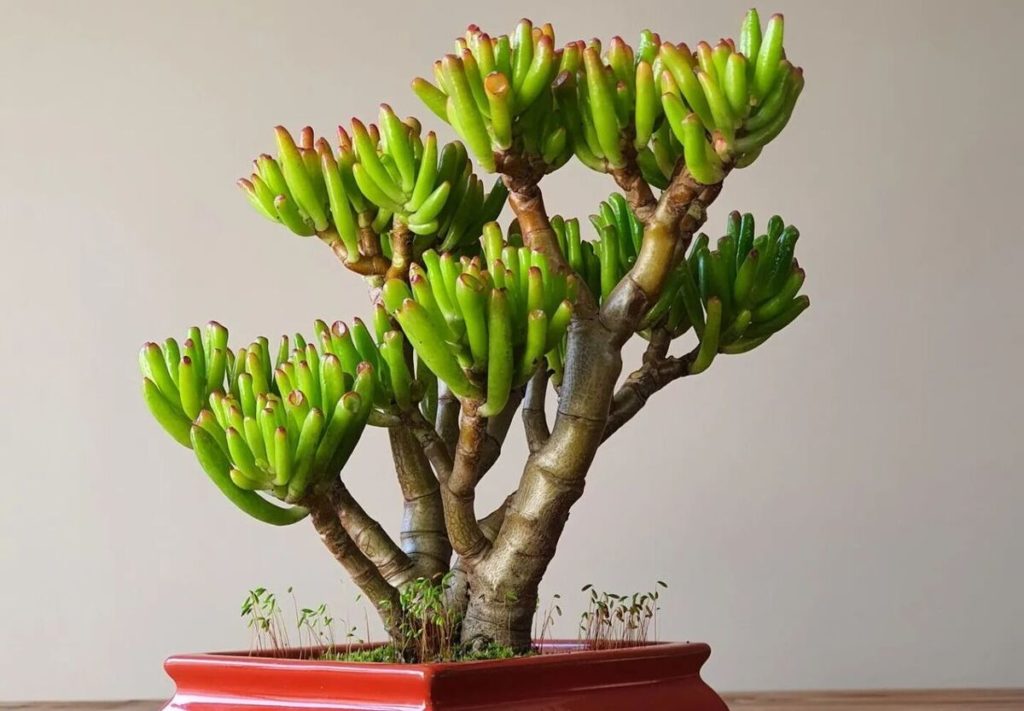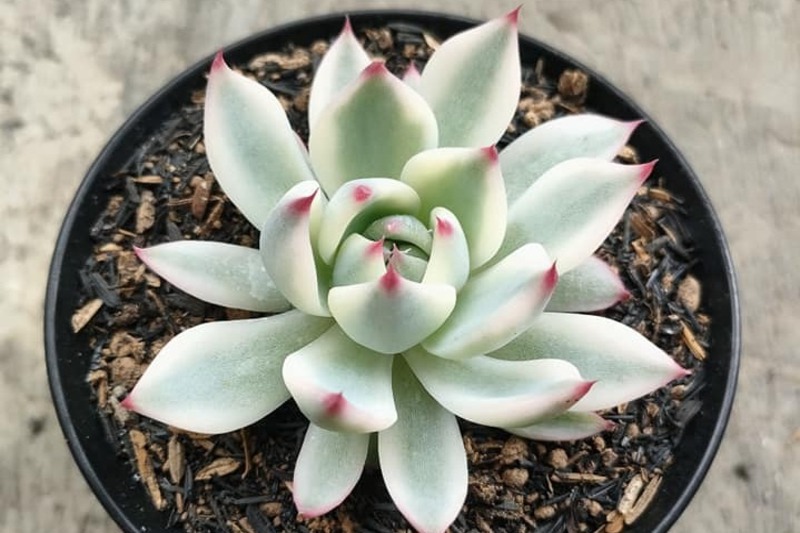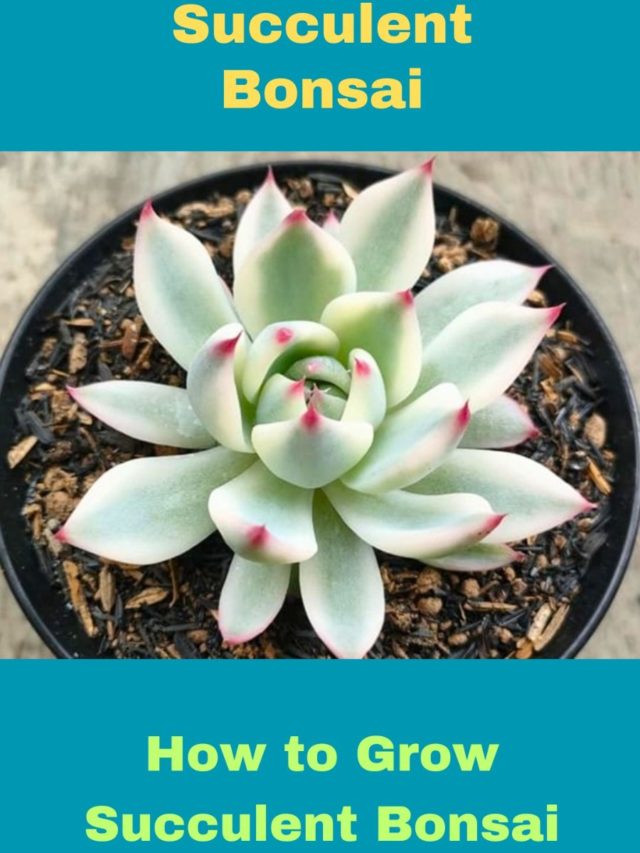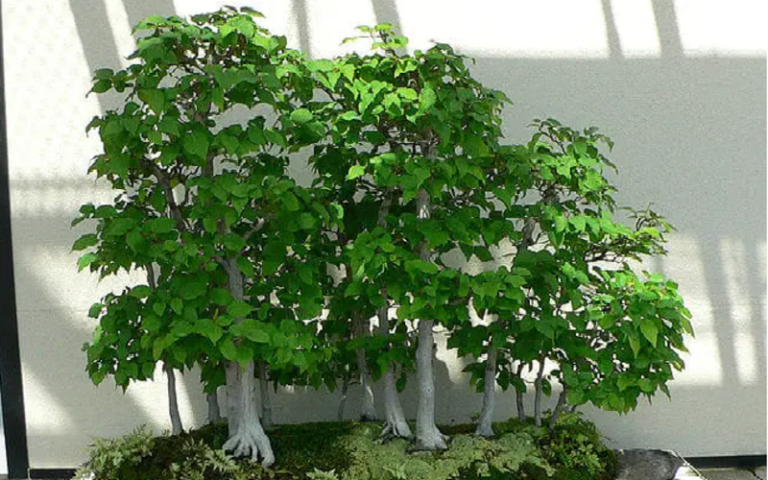Succulent Bonsai: A Miniature Plant with Unique Beauty
Succulent bonsai combines two ancient arts: bonsai and succulent plants. This miniature plant is grown using slow-growing succulent plants, such as jade, cactus, or aloe Vera, and trained to take on a more miniature and bonsai-like appearance.
In this article, we will explore the different types of succulent bonsai, how to grow and care for them, and the benefits of having a succulent bonsai.
Types of Succulent Bonsai
Plants with distinctive traits can be used to make succulent bonsai. Succulent bonsai favorites include:
- Jade plant (Crassula ovata): One of the most well-liked options for succulent bonsai is the jade plant. It can flourish in a range of lighting settings and has thick, oval-shaped leaves.
- Cactus: Cacti are a common option for succulent bonsai because of their distinctive forms and spiky look.
- Aloe Vera: Because of its spiky look and unusual forms, cacti are a popular option for succulent bonsai.
- Haworthia: Little succulent plants of the Haworthia genus are distinguished by their characteristic rosette form and pointy leaves. They are a fantastic option for novices because they require little maintenance.
- Echeveria: Echeveria is a genus of succulent plants with rosette-shaped leaves that come in a range of hues, including green, pink, and purple. They may be utilized to make a vibrant and distinctive succulent bonsai and are well-known for their eye-catching leaves.
These are only a handful of the numerous succulent bonsai varieties available. Consider the plant’s growth pattern, leaf form, and overall look when selecting a plant for your succulent bonsai.
How to Grow Succulent Bonsai
Here are some tips on how to grow a succulent bonsai:
Choose the right plant: Choose a slow-growing succulent plant that is well-suited for bonsai, such as a jade plant, cactus, or aloe Vera. Look for a healthy plant with a well-established root system.
Choose the right pot: Choose a shallow pot with good drainage to prevent water from accumulating in the roots. Bonsai pots are ideal for this purpose, but any shallow pot will do as long as it has adequate drainage holes.
Choose the right soil: Use a well-draining soil mix that allows for good air circulation around the roots. A mix of 50% soil and 50% perlite or coarse sand is a good option.
Watering: Succulent bonsai are susceptible to overwatering, so it’s important to water them thoroughly but infrequently. Water the plant when the soil is dry to the touch, and allow the soil to dry out completely before watering again.
Fertilizing: Once a month throughout the growing season, apply a balanced fertilizer, but avoid over-fertilizing, which might kill the plant.
Pruning and shaping: Maintain the plant’s size and shape by pruning it, and use wires to bend the branches into the appropriate shape. Be patient since it might take months or even years to shape a bonsai of succulents.
Lighting: Succulent bonsai require at least 4-6 hours of direct sunshine every day. Too much direct sunshine might cause the leaves to burn, so keep the plant out of direct sunlight.
By following these tips, you can successfully grow and care for a beautiful succulent bonsai. Remember to be patient and enjoy the process, as bonsai is a slow and rewarding art form.
Benefits of Succulent Bonsai
Here are some benefits of succulent bonsai:
- Low maintenance: Succulent bonsai are relatively low maintenance compared to other types of bonsai. They require minimal watering and can tolerate a variety of lighting conditions.
- Aesthetically pleasing: A succulent bonsai may give a touch of natural beauty to any interior or outdoor environment. They are available in several sizes, shapes, and hues, making them a flexible accent to any interior design.
- Stress relief: Bonsai growing may be both soothing and calming. Caring after a succulent bonsai can help alleviate tension and worry and generate a feeling of well-being.
- Air purifying: Succulent plants are recognized for their ability to filter the air. They absorb harmful contaminants and release oxygen, so enhancing the quality of indoor air.
- Educational: Raising a succulent bonsai is an excellent approach to study horticulture and the bonsai art. It may also give youngsters with a pleasant and instructive pastime.
- Long-lasting: With careful care, succulent bonsai may thrive for many years, making them a durable and sustainable addition to your home or landscape.
These are only some of the numerous advantages of succulent bonsai. If you’re searching for a low-maintenance houseplant or a soothing pastime, succulent bonsai might be an excellent option.

Caring for Succulent Bonsai
Here are some tips on how to care for a succulent bonsai:
- Watering: These are but a few of the numerous advantages of succulent bonsai. Succulent bonsai may be a terrific option whether you want a low-maintenance plant for your home or a soothing pastime.
- Soil: Make sure there’s enough of air getting to the roots by using a soil that drains effectively. One approach is to combine 50 percent soil with 50 percent perlite or coarse sand. Root rot may be prevented by avoiding soil mixtures that hold too much water.
- Fertilizing: Use a balanced fertilizer once a month during the growing season, but be careful not to over-fertilize as this can harm the plant. Use a low-nitrogen fertilizer to avoid promoting excessive foliage growth.
- Lighting: Succulent bonsai require at least four to six hours of bright, indirect sunshine every day. Leaves will burn if exposed to direct sunlight for too long, so keep that in mind while placing the plant.
- Pruning: Prune the plant to maintain its size and shape, and to remove any dead or damaged leaves. Use clean, sharp scissors or pruning shears to avoid damaging the plant.
- Repotting: Repot the plant every 2-3 years to provide fresh soil and room for growth. Choose a slightly larger pot with good drainage holes and use a well-draining soil mix.
- Pests and diseases: Succulent bonsai are generally resistant to pests and diseases, but they can still be affected by spider mites, mealybugs, and other pests. Keep a close eye on the plant for any signs of infestation and treat it promptly with insecticidal soap or other remedies.
Succulent Bonsai Care Sheet
| Aspect | Care Tips |
| Light | Bright, indirect sunlight for at least 4-6 hours per day. |
| Watering | Infrequent watering; only water when soil is dry to the touch. |
| Soil | Well-draining mix with good air circulation. |
| Fertilizer | Use a balanced, water-soluble fertilizer once a month. |
| Pruning | Prune to maintain size and shape, and remove dead leaves. |
| Repotting | Every 2-3 years, using a slightly larger pot and fresh soil. |
| Pests and Diseases | Watch for spider mites, mealybugs, and other pests. Treat promptly if needed. |
By following these tips, you can ensure that your succulent bonsai stays healthy and vibrant. Remember to be patient and enjoy the process, as bonsai is a slow and rewarding art form.
Conclusion
Succulent bonsai is a beautiful and unique way to incorporate nature into your indoor or outdoor space. With the right care and attention, these miniature plants can thrive and bring joy and tranquility to your life. Choose your favorite succulent plant, start growing your own succulent bonsai, and enjoy its unique beauty and benefits!
FAQ:
Q: What is a succulent bonsai?
A: A succulent bonsai is a tiny tree or shrub that has been carefully shaped and then kept in a pot. Succulent plants are used because their fleshy leaves and stems can hold large amounts of water.
Q: How frequently do I need to water my succulent bonsai?
A: Watering frequency for succulent bonsai should be low. Let the soil to dry out fully between watering, and water the plant only when the top inch of soil is dry. Be cautious not to overwater the plant, since this can lead to root rot and other issues.
Q: What kind of soil should I use for my succulent bonsai?
A: Select a soil mix that drains effectively and allows for optimum air circulation around the roots. A mixture of 50% soil and 50% perlite or coarse sand is an excellent choice. Use of soil mixtures that hold too much moisture might cause root rot.
Q: Can I keep my succulent bonsai indoors?
A: Yes, succulent bonsai can be kept indoors as long as they receive bright, indirect sunlight for at least 4-6 hours per day.
Q: How do I prune my succulent bonsai?
A: Prune the plant to maintain its size and shape, and to remove any dead or damaged leaves. Use clean, sharp scissors or pruning shears to avoid damaging the plant.
Q: How do I repot my succulent bonsai?
A: Repot the plant every 2-3 years to provide fresh soil and room for growth. Choose a slightly larger pot with good drainage holes and use a well-draining soil mix.
Q: What pests and diseases can affect my succulent bonsai?
A: Succulent bonsai are generally resistant to pests and diseases, but they can still be affected by spider mites, mealybugs, and other pests. Keep a close eye on the plant for any signs of infestation and treat it promptly with insecticidal soap or other remedies.
Also Read:
Rainbow Eucalyptus Bonsai: A Beautiful and Beneficial Plant for Your Home








